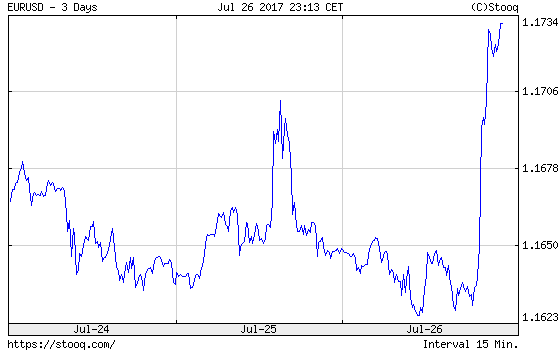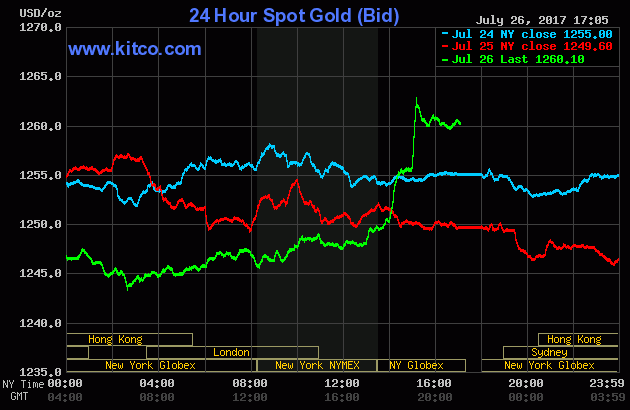On Wednesday, the Fed released its most recent monetary policy statement. How can it affect the gold market?
In line with expectations, the Fed kept interest rates unchanged at between 1.00 and 1.25 percent: “in view of realized and expected labor market conditions and inflation, the Committee decided to maintain the target range for the federal funds rate at 1 to 1-1/4 percent.”
As we predicted on Wednesday, the statement was little changed, but the U.S. central bank acknowledged the subdued inflation. It pointed out again that inflation was running below 2 percent, but this time removed the adverb ‘somewhat’:
“On a 12-month basis, overall inflation and the measure excluding food and energy prices have declined and are running below 2 percent. Market-based measures of inflation compensation remain low; survey-based measures of longer-term inflation expectations are little changed, on balance.”
Moreover, the Fed omitted the word ‘recently’ after the phrase about inflation. It can be seen as a confirmation that the recent weakness in inflation may last longer than expected.
On the other hand, the Fed noted that the labor market had continued to strengthen and argued that economic conditions would evolve in a manner that would warrant gradual increases in the federal funds rate, and described the balance of risks as “roughly balanced”, same as before. Additionally, the U.S. central bank replaced “this year” with “relatively soon” in the description of the timing of its balance sheet normalization: “the Committee expects to begin implementing its balance sheet normalization program relatively soon, provided that the economy evolves broadly as anticipated.”
On balance, the statement was considered dovish by the markets. As a result, the EUR/USD exchange rate soared yesterday, as the chart below shows.
Chart 1: EUR/USD exchange rate over the three last days.

The collapse of the U.S. dollar sent gold prices north, as one can see in the chart below. The reaction of the yellow metal was generally similar to the greenback’s move.
Chart 2: Price of gold over the last three days.

Summing up, the Fed did not change its monetary policy, but acknowledged that inflation had remained subdued. The statement was interpreted as dovish. The U.S. dollar plunged against the euro, while the price of gold increased. However, the greenback recovered against the euro today during trading in Europe, so it’s possible that gold will also reverse. Stay tuned!
Disclaimer: Please note that the aim of the above analysis is to discuss the likely long-term impact of the featured phenomenon on the price of gold and this analysis does not indicate (nor does it aim to do so) whether gold is likely to move higher or lower in the short- or medium term. In order to determine the latter, many additional factors need to be considered (i.e. sentiment, chart patterns, cycles, indicators, ratios, self-similar patterns and more) and we are taking them into account (and discussing the short- and medium-term outlook) in our trading alerts.
